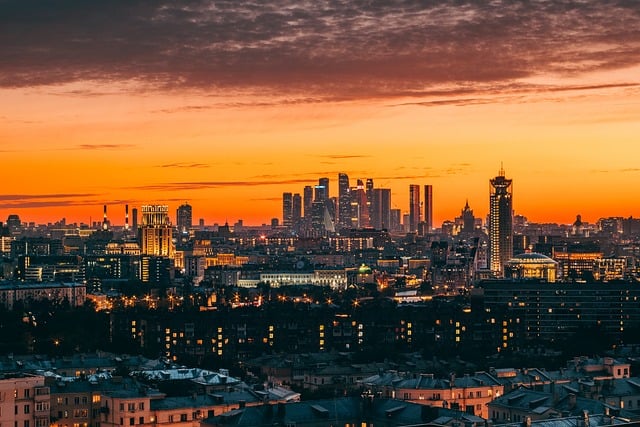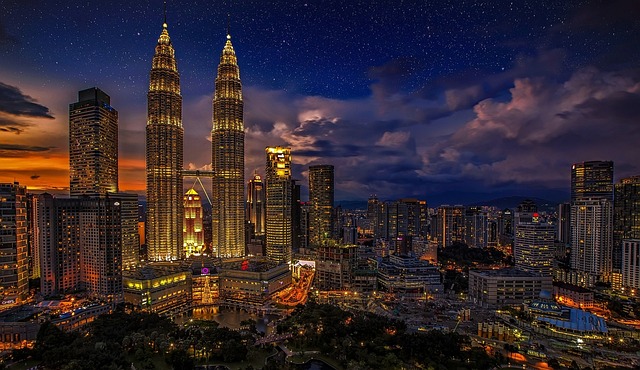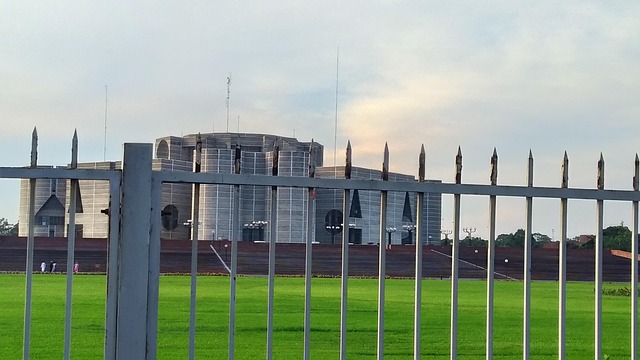
Karachi residents rely on the Air Quality Index (AQI) to monitor harmful pollutants like PM2.5, PM10, and nitrogen dioxide, which stem from vehicle emissions, industrial activities, and construction projects. High AQI levels highlight the need for sustainable solutions such as promoting public transport, cleaner energy sources, and green spaces. Both citizens and the government share responsibility in enhancing air quality through responsible practices and stringent regulations.
In the heart of Karachi, Pakistan’s vibrant metropolis, the air we breathe has become a pressing concern. The Air Quality Index (AQI) for Shahra-e-Faisal often mirrors the city’s complex tapestry of environmental challenges. This article explores the factors driving the AQI levels in Karachi, from industrial emissions to vehicular pollutants. We delve into actionable strategies aimed at improving air quality, emphasizing the pivotal roles of both citizens and government initiatives in crafting a cleaner, healthier future for the bustling metropolis.
- Understanding Air Quality Index (AQI) in Karachi
- Key Pollutants Impacting Shahra-e-Faisal's AQI
- Current AQI Levels and Their Implications
- Strategies to Improve Air Quality in the City
- The Role of Citizens and Government Efforts
Understanding Air Quality Index (AQI) in Karachi

In Karachi, understanding the Air Quality Index (AQI) is crucial for residents to make informed decisions regarding their health and outdoor activities. The AQI provides a standardized measurement of air pollution levels in an area, categorizing them into different color-coded categories: green (good), yellow (moderate), orange (unhealthy), red (very unhealthy), and purple (hazardous). Each category corresponds to specific air quality standards, indicating the potential risks associated with breathing the air.
The AQI takes into account various pollutants, with the primary ones being particulate matter (PM2.5 and PM10), nitrogen dioxide, sulfur dioxide, and ozone. Regularly checking the AQI for Karachi helps residents stay updated on pollution levels, especially during peak seasons or specific events that can exacerbate air quality issues. This awareness enables them to take preventive measures, such as wearing masks when the AQI indicates high pollution, avoiding strenuous outdoor activities, and staying informed about local alerts.
Key Pollutants Impacting Shahra-e-Faisal's AQI

The Air Quality Index (AQI) in Shahra-e-Faisal, Karachi, is significantly influenced by several key pollutants. The primary contributors to the city’s AQI include vehicle emissions, industrial activities, and construction projects. With a high density of vehicles on the roads and an expanding industrial sector, these sources release harmful pollutants such as nitrogen oxides (NOx), particulate matter (PM2.5 and PM10), and volatile organic compounds (VOCs).
Karachi’s geographical location and meteorological conditions also play a role in trapping these pollutants, leading to poor air quality, especially during certain seasons. The city’s diverse industrial base, including manufacturing, power generation, and construction, contributes significantly to NOx and VOC levels. Additionally, dust from construction sites and road dust further exacerbate the PM concentration, making it challenging for residents to breathe clean air.
Current AQI Levels and Their Implications

In Karachi, the Air Quality Index (AQI) serves as a crucial metric for gauging the city’s air health. The current AQI levels in Shahra-e-Faisal, one of the busiest areas of the metropolis, often reflect the dense traffic and industrial activities that characterize this urban center. On any given day, the AQI may fluctuate based on factors such as vehicle emissions, construction dust, and industrial pollutants, painting a dynamic picture of air quality.
High AQI levels in Karachi, especially during peak seasons, underscore the need for proactive measures to mitigate pollution. This includes initiatives aimed at encouraging public transportation usage, implementing stricter emission standards for vehicles, and promoting green spaces to absorb pollutants. For folks living or working in Shahra-e-Faisal, staying informed about the AQI is essential, as it directly impacts their health and well-being, prompting them to take necessary precautions on days when air quality deteriorates.
Strategies to Improve Air Quality in the City

Karachi, as a bustling metropolis, faces significant challenges when it comes to air quality. To combat this, several strategic initiatives can be implemented. One key approach is to promote sustainable transportation options; encouraging public transit use, cycling, and walking can reduce vehicle emissions that contribute to poor air quality. Additionally, the city can foster a shift towards cleaner energy sources by incentivizing the adoption of renewable energy technologies and phasing out coal-based power plants.
Green spaces play a vital role in Karachi’s air quality improvement. Planting more trees and creating urban forests can act as natural air filters, absorbing pollutants. The city government can also collaborate with local communities to organize regular community clean-up drives and raise awareness about the impact of littering on air quality. Furthermore, implementing stricter industrial emission norms and promoting eco-friendly manufacturing practices will significantly contribute to a healthier urban atmosphere for the residents of Karachi.
The Role of Citizens and Government Efforts

In the context of improving air quality in Karachi, both citizens and the government play pivotal roles. Citizens are instrumental in driving change by adopting sustainable practices such as reducing personal vehicle usage, promoting public transport, and minimizing outdoor activities during peak pollution levels. They also contribute by advocating for stricter environmental policies and regularly monitoring local air quality indices.
The government’s efforts complement these citizen initiatives through stringent regulations and policy interventions. This includes enforcing industrial emission standards, promoting clean energy sources, and implementing traffic management strategies. Regularly updating the public on air quality conditions and providing actionable steps to mitigate exposure are additional measures that significantly enhance collective efforts to combat air pollution in Karachi.
Karachi’s air quality, as indicated by the Air Quality Index (AQI) readings at Shahra-e-Faisal, highlights the pressing need for collaborative efforts to combat pollution. By understanding the key pollutants and their sources, we can implement effective strategies to improve the city’s atmosphere. Citizen awareness and government initiatives play a pivotal role in this process. Through collective action, Karachi can strive for cleaner air, ensuring a healthier future for its residents.






